The Devon Invasive Species Initiative is a GB Non-Native Species Secretariat Local Action Group (LAG), which ensures it is kept aware of national priorities and projects and given us access to expertise across the country and beyond.
A small steering group of interested partners has developed the Devon Invasive Species Initiative (DISI) under the umbrella of the Devon LNP.
DISI has five main areas of focus:
- Raising awareness of invasive species.
- Improving the sharing of records/mapping of invasive species across Devon.
- Sharing good practice guidelines.
- Sharing/promoting good biosecurity measures.
- Researching funding opportunities around invasive species.
If you would like to find out more DISI or join the Steering Group please contact Kate Hills (Chair) or Ali Slade (Sec).
Devon fact sheets – Identification and Management
Identification of invasive non-native species is an essential part of invasive species management. DISI is in the process of developing fact-sheets to help provide identification and management assistance for invasive species found in Devon.
These can also be freely downloaded, printed, used for stakeholder engagement and linked to from external websites.
- American Mink (Neovison vison)
- American Skunk Cabbage (Lysichiton americanus)
- Carpet Sea Squirt (Didemnum vexillum)
- Chinese Mitten Crab (Eriocheir sinensis)
- Grey Squirrel (Sciurus carolinensis)
- Himalayan Balsam (Impatiens glandulifera)
- Japanese Knotweed (Fallopia japonica)
- New Zealand Pygmyweed (Crassula helmsii)
- Signal Crayfish (Pacifastacus leniusculus)
- Winter Heliotrope (Petasites fragrans)
Priority Invasives List
DISI partners have developed a list of invasive species which are deemed priorities for Devon. If you have any comments on the list please email Tom Whitlock.
Partner projects
The strength of the Devon Invasive Species Initiative lies within in its broad network of partnerships and partner organisations. Invasive species are dynamic, which only reaffirms the importance of cross-organisational collaboration on this issue.
Below is a handful of specific projects which some of our partners have been working on.
-
Moor Otters
Moor Otters is a public arts event, the first of its kind held in and around a National Park; a unique project combining art with a protected landscape.This project has helped raise funds so Dartmoor National Park can fund conservation and access projects within the National Park. One of the aims of the project is to raise funds for dealing with invasive non-native species (INNS). These are a significant threat to wildlife habitats and species globally and on Dartmoor. Many INNS are associated with the water environment and spread along rivers and streams. Dartmoor forms the headwaters of seven major river catchments in the south-west. We will work with local communities and volunteers to address this threat. This will benefit the streams and rivers, wetland habitats and the species, including otters, which depend on these habitats.
Find out more information about the Otter Moors project.
- North Devon Biosphere
In 2016, North Devon Biosphere volunteer Phil Metcalf worked on establishing the presence/absence of Himalayan Balsam in the Biosphere using a combination of existing records and community feedback at a parish level.
He sent out a letter to each Parish and also contacted local people/groups that use local rivers, e.g. local fishing clubs.
A presentation was produced which shows the results of Paul’s work and contains a number of maps that illustrate the known and confirmed distribution of the species in the North Devon Biosphere, but also an assessment of how possible it might be to reduce its spread.
Based on this work and a general concern about Non-Native Invasive Species amongst members of the Biosphere partnership, there is a policy and target on NNIS in the Biosphere Reserve Strategy to 2024. A Partnership decision has also been taken to seek to include measures to address invasive species issues within wider ranging catchment projects as they develop.
Another project run through the North Devon Biosphere included a number of highly successful parrots feather removal volunteer days at a pond on Hatherleigh Moor. These volunteer days were run through the community engagement programme within the Biosphere’s Defra funded phase of the North Devon Nature Improvement Project.
They were so successful that the Moor Management Group has now agreed to take on the existing long term management of the parrots feather in the pond. Some before and after photographs and further weblinks to the project are also available.
For more information about the North Devon Biosphere, please visit: http://www.northdevonbiosphere.org.uk/.
- The Tamar Invasives Group
The Tamar Invasives Group was created specifically to control invasive plants in the River Tamar corridor. The partnership of four organisations, Tamar Valley AONB, Environment Agency, Natural England and Cornwall Council, have been working together for the past 15 years to control invasive species in the riparian section of the AONB. The three main species are Giant Hogweed, Japanese knotweed and Himalayan balsam.
The main focus has been on the eradication of Giant Hogweed and the project has demonstrated considerable success by maintaining focus over this time. This has been achieved by surveying and control (herbicide treatment or hand digging on organic land).
Further funding and support from South West Water, Environment Agency, Natural England and the Tamar Valley Area of Outstanding Natural Beauty (TVAONB) has allowed the group to continue with the treatment for the forthcoming season.
Giant Hogweed is now showing a significant decrease in the Tamar Catchment and the Tamar Invasives Group think with the continued and ongoing support of the landowners that within a decade we should be able to eradicate this pernicious plant. Counts from the contractors carrying out the removal work suggests the number of Giant Hogweed plants in the Tamar for 2017 is 297 plants – down from c3,658 in 2012.
- West County Rivers Trust
The North Devon Catchment Partnership has plans to address the issue of non-native invasive species (NNIS) within the catchment, as one of their aims in 2017.
The Westcountry Rivers Trust conducted a survey for non-native invasive species (NNIS) towards the end of 2015 to map and NNIS in the Upper Taw river corridor. The aim was to determine the upstream extents of NNIS, and particularly Himalayan Balsam; exploring all minor tributaries as well as the main river.
The report for the survey concluded that Himalayan balsam was the most problematic invasive species within the Upper Taw River and suggests targeting the main river and upstream tributaries to begin eradication, whilst also implementing educational programmes to achieve a longer term and sustainable solution to the problem Read the full report into NNIS.
- Moor than meets the eye
There are a number of invasive non-native plant species that occur on Dartmoor, of which we think two species, Himalayan Balsam and Skunk Cabbage are having the most significant environmental impact. Both species are highly invasive, posing a real threat to the native flora and important habitats on Dartmoor. Himalayan Balsam is now covering whole fields, the banks of streams, floodplains, and is also now even appearing on the open moor. The dense tall thickets have a major impact on nature conservation, archaeology, access and landscape value and in the winter leave behind bare ground at risk of erosion. Skunk Cabbage is more localised in its distribution, but is now starting to become an issue, particularly along watercourses from high up in the Bovey catchment.
Whilst it is recognised that the problem is far wider than the MTMTE project area, an integrated and coordinated control project has being piloted at the top of the Bovey catchment, targeting both Himalayan Balsam and Skunk Cabbage. The approach has been to work with local landowners and tenants, rangers, volunteers, and voluntary wardens. The top of each tributary in the upper Bovey catchment was surveyed in 2015 and 2016 for American skunk cabbage and Himalayan balsam to establish the source of the problem. For American skunk cabbage targeted eradication work involved different methods appropriate to each area and trialled during 2016 and 2017 at the most effective time of year (March to July). During 2017 the effectiveness of various treatment measures have been monitored to compare mechanical methods (hand digging, removing seed heads, cutting) and herbicide application under an Environment Agency licence. North Bovey Conservation Group and Natural England’s Ecoskills Conservation trainees have also been actively engaged in assisting with treatment and advising landowners. Monitoring suggests any treatment is better than none, with varying degrees of effectiveness between mechanical and chemical treatment. So far chemical treatment is proving to be the most successful method in kerbing growth, however eradication is a way off and is likely to take a number of seasons. By focussing on the ‘top of catchment’ approach the project has been able to successfully tackle invasive species at source whilst engaging with landowners, volunteers and closely monitoring the effectiveness of different treatment measures. The pilot comes to an end in 2017 however, treatment will continue with those landowners and volunteers already engaged and it is hoped community engagement will continue through existing groups. MTMTE and Dartmoor National Park Authority aims to develop a project linked to other initiatives and citizen science projects and expand the control of these invasive plants at prioritised locations where they threaten important habitats elsewhere on Dartmoor. There is a growing recognition that if something isn’t done soon on Dartmoor, the problem has the potential to increase rapidly. At the same time, Dartmoor is the top of the catchment for most of Devon’s rivers; therefore there is the opportunity to start eradicating the plants from the source of the original introduction and work methodically downstream. The control of Himalayan Balsam, and other invasive plant species, has been one of the work areas of the Moor than meets the eye Heritage Lottery Funded Landscape Partnership scheme. The MTMTE project is focusing on the wet grassland (rhôs) and wet woodland habitats which form an extensive network of wildlife-rich habitat in valley systems at the top of the Dart and Bovey catchments.
For more information on the project and how you can get involved please visit http://www.moorthanmeetstheeye.org/ or contact chrissy@moorthanmeetstheeye.org
- River Otter Himalayan balsam Project
The River Otter Himalayan Balsam Project aims to control the invasive, non-native plant Himalayan Balsam Impatiens Glandulifera along the tributaries and headwaters of the River Otter in East Devon.
The Otter Valley Association (OVA), a civic society founded to interest residents and visitors in the history, geography, natural history and architecture of this area of
Devon, has been focussing its Himalayan Balsam control efforts on tributary valleys in which volunteer teams annually improve the level of control.OVA has worked closely with Clinton Devon Estates in the Lower Otter tributaries since 2012. Once all tributaries are clear, the main valley can be tackled. As such, the project is obviously very long-term.
A team of dedicated OVA volunteers clear Himalayan balsam on Thursday and Saturday mornings; if you would like to volunteer to help the team please visit their website – http://www.ova.org.uk/himalayan-balsam
Sources of information
- Where do camels belong? Ken Thompson (essential reading)
- Search the GB Non-native Species Information Portal to find distribution data and other useful information for all non-native species within GB.
- For advice on chemical treatment of invasive species by watercourses and the safe disposal of Knotweed material, please visit the Environment Agency web pages
- Information on Biosecurity measures which will help reduce the risk of introducing/spreading invasive non-native species.
- Japanese Knotweed
- Cornwall Knotweed Forum
- The Chinese Mitten Crab Project
- South West Red Squirrel Partnership
- CABI (Centre for Agriculture and Biosciences International)
- Tamar Valley AONB guidance document on Giant Hogweed control
- Sweet chestnut blight
- Download this information poster on Asian Hornet identification.
- North Devon Biosphere
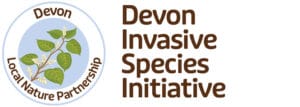
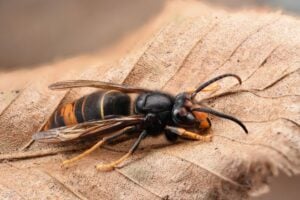
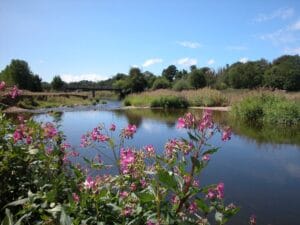
 Moor Otters is a public arts event, the first of its kind held in and around a National Park; a unique project combining art with a protected landscape.This project has helped raise funds so Dartmoor National Park can fund conservation and access projects within the National Park. One of the aims of the project is to raise funds for dealing with invasive non-native species (INNS). These are a significant threat to wildlife habitats and species globally and on Dartmoor. Many INNS are associated with the water environment and spread along rivers and streams. Dartmoor forms the headwaters of seven major river catchments in the south-west. We will work with local communities and volunteers to address this threat. This will benefit the streams and rivers, wetland habitats and the species, including otters, which depend on these habitats.
Moor Otters is a public arts event, the first of its kind held in and around a National Park; a unique project combining art with a protected landscape.This project has helped raise funds so Dartmoor National Park can fund conservation and access projects within the National Park. One of the aims of the project is to raise funds for dealing with invasive non-native species (INNS). These are a significant threat to wildlife habitats and species globally and on Dartmoor. Many INNS are associated with the water environment and spread along rivers and streams. Dartmoor forms the headwaters of seven major river catchments in the south-west. We will work with local communities and volunteers to address this threat. This will benefit the streams and rivers, wetland habitats and the species, including otters, which depend on these habitats. In 2016, North Devon Biosphere volunteer Phil Metcalf worked on establishing the presence/absence of Himalayan Balsam in the Biosphere using a combination of existing records and community feedback at a parish level.
In 2016, North Devon Biosphere volunteer Phil Metcalf worked on establishing the presence/absence of Himalayan Balsam in the Biosphere using a combination of existing records and community feedback at a parish level.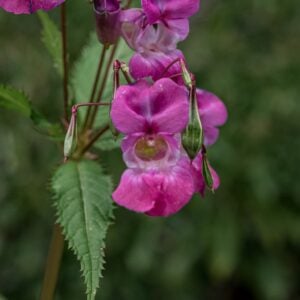 Another project run through the North Devon Biosphere included a number of highly successful parrots feather removal volunteer days at a pond on Hatherleigh Moor. These volunteer days were run through the community engagement programme within the Biosphere’s Defra funded phase of the North Devon Nature Improvement Project.
Another project run through the North Devon Biosphere included a number of highly successful parrots feather removal volunteer days at a pond on Hatherleigh Moor. These volunteer days were run through the community engagement programme within the Biosphere’s Defra funded phase of the North Devon Nature Improvement Project. The Tamar Invasives Group was created specifically to control invasive plants in the River Tamar corridor. The partnership of four organisations, Tamar Valley AONB, Environment Agency, Natural England and Cornwall Council, have been working together for the past 15 years to control invasive species in the riparian section of the AONB. The three main species are Giant Hogweed, Japanese knotweed and Himalayan balsam.
The Tamar Invasives Group was created specifically to control invasive plants in the River Tamar corridor. The partnership of four organisations, Tamar Valley AONB, Environment Agency, Natural England and Cornwall Council, have been working together for the past 15 years to control invasive species in the riparian section of the AONB. The three main species are Giant Hogweed, Japanese knotweed and Himalayan balsam.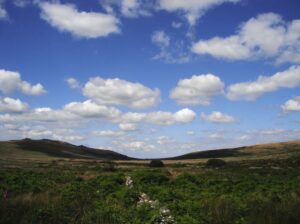 Further funding and support from South West Water, Environment Agency, Natural England and the Tamar Valley Area of Outstanding Natural Beauty (TVAONB) has allowed the group to continue with the treatment for the forthcoming season.
Further funding and support from South West Water, Environment Agency, Natural England and the Tamar Valley Area of Outstanding Natural Beauty (TVAONB) has allowed the group to continue with the treatment for the forthcoming season. The North Devon Catchment Partnership has plans to address the issue of non-native invasive species (NNIS) within the catchment, as one of their aims in 2017.
The North Devon Catchment Partnership has plans to address the issue of non-native invasive species (NNIS) within the catchment, as one of their aims in 2017.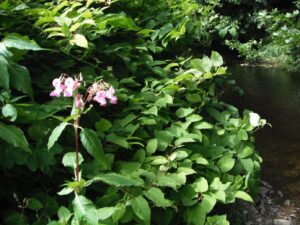
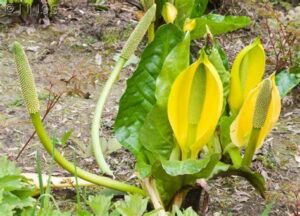 There are a number of invasive non-native plant species that occur on Dartmoor, of which we think two species, Himalayan Balsam and Skunk Cabbage are having the most significant environmental impact. Both species are highly invasive, posing a real threat to the native flora and important habitats on Dartmoor. Himalayan Balsam is now covering whole fields, the banks of streams, floodplains, and is also now even appearing on the open moor. The dense tall thickets have a major impact on nature conservation, archaeology, access and landscape value and in the winter leave behind bare ground at risk of erosion. Skunk Cabbage is more localised in its distribution, but is now starting to become an issue, particularly along watercourses from high up in the Bovey catchment.
There are a number of invasive non-native plant species that occur on Dartmoor, of which we think two species, Himalayan Balsam and Skunk Cabbage are having the most significant environmental impact. Both species are highly invasive, posing a real threat to the native flora and important habitats on Dartmoor. Himalayan Balsam is now covering whole fields, the banks of streams, floodplains, and is also now even appearing on the open moor. The dense tall thickets have a major impact on nature conservation, archaeology, access and landscape value and in the winter leave behind bare ground at risk of erosion. Skunk Cabbage is more localised in its distribution, but is now starting to become an issue, particularly along watercourses from high up in the Bovey catchment.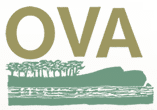 The River Otter Himalayan Balsam Project aims to control the invasive, non-native plant Himalayan Balsam Impatiens Glandulifera along the tributaries and headwaters of the River Otter in East Devon.
The River Otter Himalayan Balsam Project aims to control the invasive, non-native plant Himalayan Balsam Impatiens Glandulifera along the tributaries and headwaters of the River Otter in East Devon.